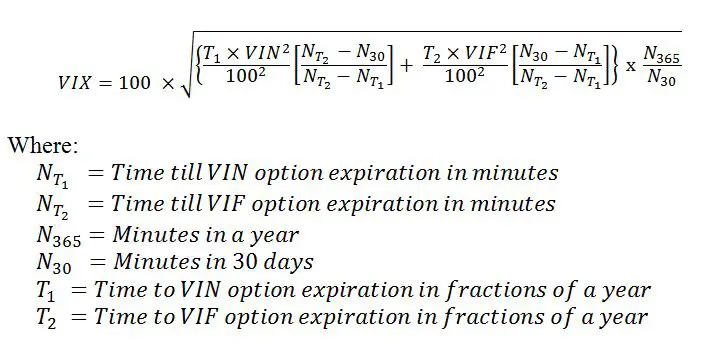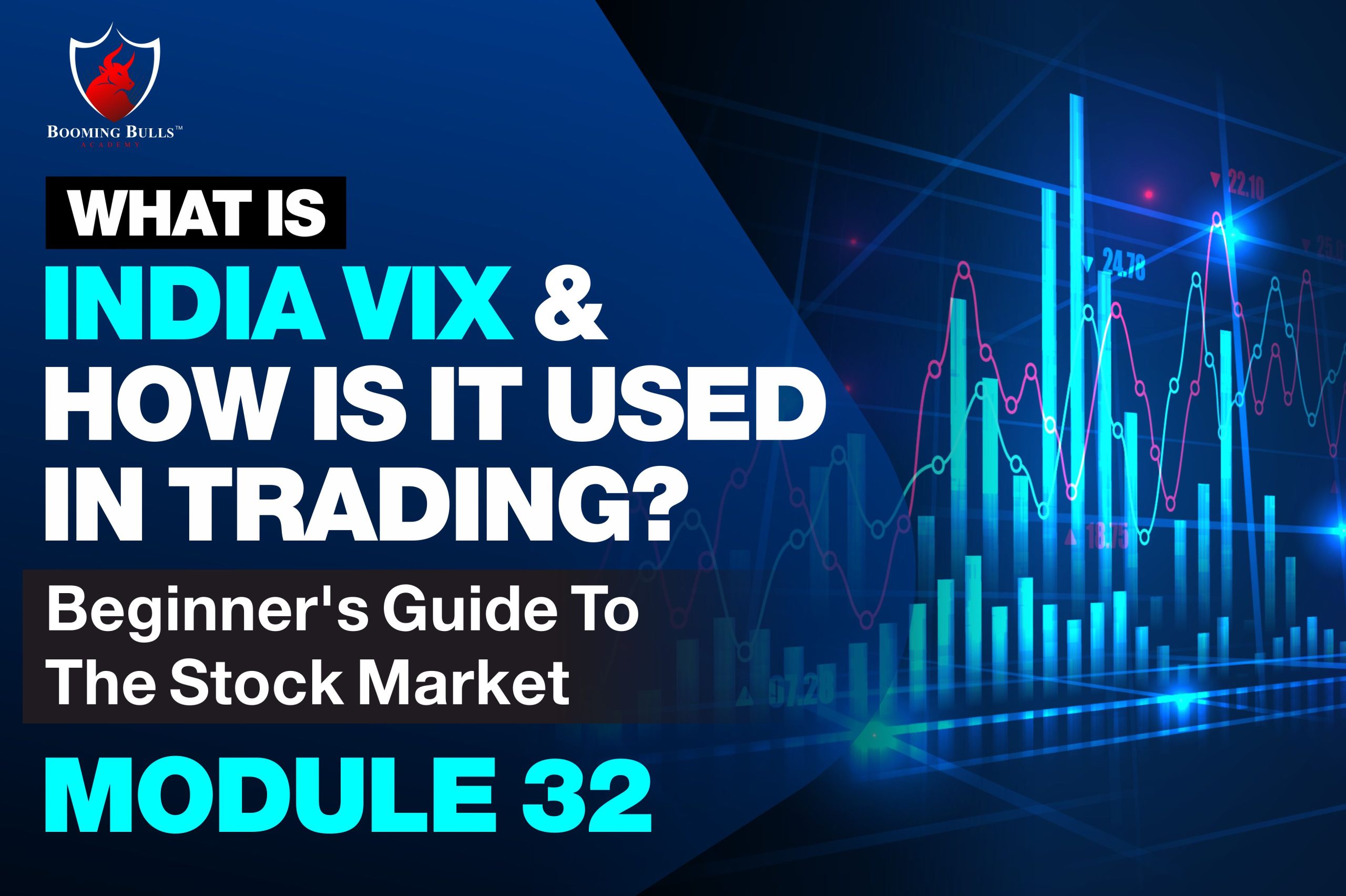What is the VIX Index and Why Does it Matter?
The VIX index, also known as the CBOE Volatility Index, is a widely followed metric that measures the market’s expected volatility of the S&P 500 index. It is often referred to as the “fear index” because it tends to spike during periods of market turmoil and decline during periods of calm. Understanding how the VIX is calculated is crucial for investors, as it can help them make informed decisions about their investments and manage risk more effectively. The VIX calculation provides a snapshot of market sentiment, allowing investors to gauge the level of uncertainty and make adjustments to their portfolios accordingly. By grasping the underlying mechanics of the VIX, investors can better navigate the complexities of the market and make more informed investment decisions.
Delving into the Math Behind the VIX
The VIX calculation is based on a complex mathematical formula that takes into account various factors, including options prices, time to expiration, and interest rates. At its core, the VIX is a measure of the market’s expected volatility of the S&P 500 index, and understanding how it is calculated is essential for investors seeking to make informed decisions. The formula used to calculate the VIX is based on the Nobel Prize-winning work of economists Fischer Black and Myron Scholes, and it involves a complex series of calculations that incorporate options prices, time to expiration, and interest rates. By grasping the underlying math behind the VIX, investors can gain a deeper understanding of how the index is calculated and how it can be used to inform investment decisions. In this article, we will delve into the details of the VIX calculation, exploring how options prices, time to expiration, and interest rates all play a role in determining the index’s value.
How Options Prices Influence the VIX Calculation
Options prices play a crucial role in the VIX calculation, as they reflect market expectations of future volatility. The VIX index is calculated using a range of options contracts with different strike prices and expiration dates, which allows it to capture a broad spectrum of market sentiment. Call options, which give the holder the right to buy an underlying asset at a specified price, and put options, which give the holder the right to sell an underlying asset at a specified price, are both used in the VIX calculation. The prices of these options contracts are used to infer the market’s expected volatility of the S&P 500 index, with higher options prices indicating higher expected volatility. The impact of options expiration dates is also significant, as options contracts with shorter expiration dates tend to be more sensitive to changes in market volatility. By understanding how options prices influence the VIX calculation, investors can gain a deeper appreciation of how the index is calculated and how it can be used to inform investment decisions. In fact, understanding how the VIX is calculated can help investors make more informed decisions about their investments, as it provides a unique window into market sentiment and expected volatility.
The Role of Time to Expiration in VIX Calculation
The time to expiration of options contracts plays a significant role in the VIX calculation, as it affects the sensitivity of options prices to changes in market volatility. Options contracts with shorter expiration dates, such as those expiring in a few days or weeks, are more sensitive to changes in market volatility than those with longer expiration dates, such as those expiring in several months. This is because short-term options are more closely tied to current market conditions, whereas long-term options reflect expectations of future market volatility. As a result, the VIX calculation gives more weight to short-term options prices, which are more reflective of current market sentiment. By understanding how the time to expiration of options contracts affects the VIX calculation, investors can gain a deeper appreciation of how the index is calculated and how it can be used to inform investment decisions. For instance, a spike in short-term options prices may indicate a sudden increase in market volatility, while a decrease in long-term options prices may suggest a decrease in expected future volatility. By grasping the nuances of how the VIX is calculated, investors can make more informed decisions about their investments and better navigate market fluctuations.
Interest Rates and Their Impact on the VIX
Interest rates play a crucial role in the VIX calculation, as they affect the pricing of options contracts and, subsequently, the volatility index. The VIX calculation takes into account the risk-free rate of return, which is typically proxied by the yield on short-term U.S. Treasury bills. This rate is used to discount the expected future cash flows from options contracts, which in turn affects the options prices used in the VIX calculation. When interest rates rise, the present value of future cash flows decreases, leading to lower options prices and, consequently, a lower VIX index. Conversely, when interest rates fall, options prices increase, and the VIX index rises. Understanding the relationship between interest rates and the VIX calculation is essential, as it can help investors anticipate how changes in interest rates may impact market volatility. For instance, a sudden increase in interest rates may lead to a decrease in the VIX index, indicating a decrease in expected market volatility. By grasping how interest rates influence the VIX calculation, investors can better navigate the complex interactions between interest rates, options prices, and volatility, ultimately making more informed investment decisions. As a result, understanding how the VIX is calculated can provide valuable insights into the intricate dynamics of the financial markets.
A Step-by-Step Guide to Calculating the VIX
The VIX calculation is a complex process that involves several steps. To help readers understand how the VIX is calculated, we will break down the process into a series of easy-to-follow steps. By the end of this section, readers will have a clear understanding of the VIX calculation and how it is used to measure market volatility.
Step 1: Selecting the Options Contracts
The VIX calculation uses a range of options contracts on the S&P 500 index, with varying expiration dates and strike prices. The selection of options contracts is critical, as it affects the accuracy of the VIX calculation. The options contracts used in the VIX calculation are typically selected based on their liquidity and trading volume.
Step 2: Calculating the Midpoint Price
The midpoint price is the average of the bid and ask prices of each options contract. This price is used as the basis for the VIX calculation. The midpoint price is calculated for each options contract, taking into account the current market prices and trading volumes.
Step 3: Calculating the Variance
The variance is a measure of the volatility of the S&P 500 index. It is calculated using the midpoint prices of the options contracts, as well as the time to expiration and interest rates. The variance is a critical component of the VIX calculation, as it reflects the market’s expectations of future volatility.
Step 4: Calculating the VIX Index
The VIX index is calculated by taking the square root of the variance. This value is then multiplied by 100 to create the VIX index. The VIX index is a measure of the market’s expected volatility over the next 30 days.
By following these steps, readers can gain a deeper understanding of how the VIX is calculated and how it is used to measure market volatility. Understanding the VIX calculation is essential for investors, as it can help them make informed investment decisions and navigate the complex world of financial markets.
Common Misconceptions About the VIX Calculation
Despite its widespread use, the VIX calculation is often misunderstood by investors and market participants. In this section, we will address some common misconceptions about the VIX calculation, providing clarity and insight into this complex topic.
Misconception 1: The VIX is a direct measure of market volatility
One common misconception is that the VIX is a direct measure of market volatility. However, this is not entirely accurate. The VIX is actually a measure of the market’s expected volatility over the next 30 days, as reflected in options prices. This distinction is important, as it highlights the forward-looking nature of the VIX index.
Misconception 2: Options prices are the only factor in the VIX calculation
Another misconception is that options prices are the only factor in the VIX calculation. While options prices do play a critical role, they are not the only factor. Time to expiration and interest rates also influence the VIX calculation, and understanding their impact is essential for accurate interpretation of the index.
Misconception 3: The VIX is only relevant for options traders
Some investors believe that the VIX is only relevant for options traders, but this is not the case. The VIX has implications for all investors, as it provides insight into market sentiment and expected volatility. By understanding how the VIX is calculated, investors can make more informed decisions about their investments and risk management strategies.
By addressing these common misconceptions, investors can gain a deeper understanding of the VIX calculation and its significance in the world of finance. By understanding how the VIX is calculated, investors can make more informed decisions and navigate the complex world of financial markets with confidence.
Putting it All Together: Practical Applications of the VIX Calculation
Now that we have delved into the intricacies of the VIX calculation, it’s essential to discuss the practical implications of understanding this complex topic. By grasping how the VIX is calculated, investors can make more informed decisions about their investments, risk management strategies, and portfolio optimization techniques.
One of the primary applications of the VIX calculation is in investment decisions. By understanding the market’s expected volatility, investors can adjust their portfolios to mitigate potential risks or capitalize on opportunities. For example, if the VIX is high, indicating high expected volatility, investors may choose to reduce their exposure to equities or increase their allocation to safer assets.
The VIX calculation also has significant implications for risk management strategies. By understanding the market’s expected volatility, investors can develop more effective hedging strategies to protect their portfolios from potential losses. This can involve using options contracts, futures, or other derivatives to mitigate risk.
Furthermore, the VIX calculation can inform portfolio optimization techniques. By understanding the market’s expected volatility, investors can optimize their portfolios to achieve the desired level of risk and return. This can involve adjusting the asset allocation, selecting specific securities, or using alternative investment strategies.
In addition, understanding how the VIX is calculated can provide valuable insights into market sentiment and trends. By analyzing the VIX index, investors can gain a better understanding of market expectations and adjust their investment strategies accordingly.
In conclusion, understanding the VIX calculation is essential for investors seeking to navigate the complex world of financial markets. By grasping the intricacies of the VIX calculation, investors can make more informed decisions, develop effective risk management strategies, and optimize their portfolios for success.







